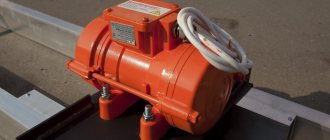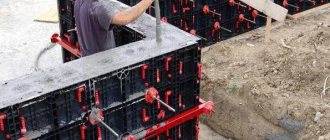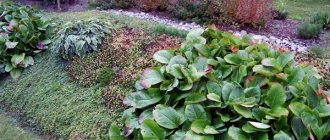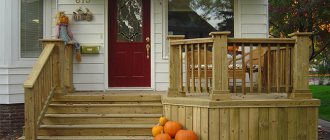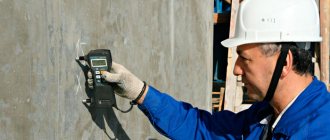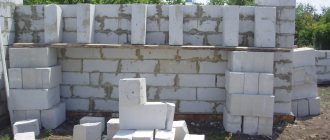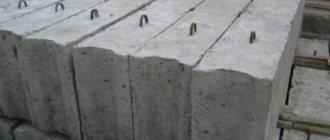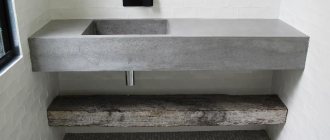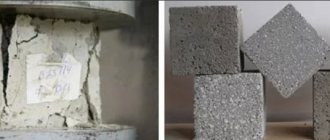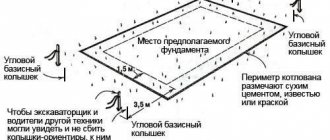Application of blocks in construction
The material, which is a type of lightweight concrete, is used for the construction of the following structures:
- masonry of external walls of buildings;
- execution of partitions on the upper floors of multi-storey buildings;
- thermal insulation and sound insulation of foundations;
- construction of baths, saunas and other premises where it is necessary to maintain a certain temperature.
The sale of polystyrene concrete blocks can be carried out both from the manufacturer’s plant, which is beneficial for both the seller and the buyer: the first does not spend on transportation, the second purchases the goods at a low price; and delivery to the customer, who pays the shipping costs.
Our business assessment:
Starting investments – from 50,000 rubles.
Market saturation is high.
The difficulty of starting a business is 2/10.
Characteristics and marking of the material
The material can be used everywhere, but taking into account the thermophysical indicators, which depend on the brand of polystyrene concrete blocks.
- The density index (D) varies from 150 to 600.
- The minimum value of compressive strength is 0.2 mPa, the maximum is 10 mPa.
- The thermal conductivity of the material is quite high - from 0.05 to 0.14 W/m °C.
- Frost resistance level (F) – from 15 to 100 cycles.
- The operating humidity indicator is from 4 to 8%.
The advantage of the business is the opportunity to start producing polystyrene concrete blocks at home. At first, products can be made to order, and over time you can find regular customers, who are both individuals and small construction organizations. But before you start organizing your own enterprise, you need to familiarize yourself with the production technology of the material.
Gerotor pump and its device - SamStroy
When constructing facilities, it is often necessary to transport liquid and paste solutions from one point to another. A gerotor pump, which is a positive displacement device, is inappropriately suitable for these purposes.
Today, gerotor pumps for concrete are very popular because they allow for rapid transportation of concrete mixtures, with a mobility of 5 centimeters or more.
What a gerotor pump is and how to choose it for construction needs will be discussed in this review.
Gerotor pump device
A gerotor pump is a special device, the operation of which is carried out due to the movement of a screw mechanism located inside its housing. The entire design of the gerotor pump is based on a rotor made of high-quality and hardened steel.
Rotating, the rotor of the gerotor pump sets in motion the incoming mixture, which evenly passes through it, pushing between the housing and the screws. Thus, it is possible to quickly and without any problems deliver the solution from one point to another, without the use of expensive special equipment.
In construction, the gerotor pump is most widely used:
- When performing large-scale plastering work;
- For supplying concrete mixtures to heights, including foam concrete, polystyrene concrete, etc.;
- For transporting various other pasty media.
However, the most significant advantage of the gerotor pump is that it allows you to easily transport viscous and abrasive slags (the viscosity of which can be more than 46,000 cSt). An advantage to all of the above is also the ability of a gerotor pump to transport multiphase media containing both gas and solid particles.
Gerotor pump - how to choose the right one?
So, in order to choose the right gerotor pump, you must first take into account the required performance and pressure (pressure) with which liquid construction mixtures will be supplied. In addition, it is important to consider the height to which the concrete solution will be supplied by the gerotor pump.
The last value (solution supply height) largely depends on the design of the rotor, which, by the way, can be different. Everything depends primarily on the diameter of the rotor and its length, as well as the number of revolutions of the pump and the pitch of the located screws.
In general, the situation when choosing a gerotor pump for concrete is as follows:
- The longer the rotor, the higher the height the gerotor pump can lift the concrete mixture;
- A larger volume of enclosed space around the rotor indicates, first of all, the high performance of the selected device;
- The same applies to the rotor rotation speed; the higher it is, the more productive the gerotor pump. However, at the same time, the resource of the selected product should also be taken into account, since in this case it will be somewhat smaller.
The reduction in pressure in the gerotor pump is primarily affected by the reduced diameter of the solution supply hose. Fittings connecting the hose also greatly reduce productivity, especially for L-shaped versions.
In addition, the pressure drop in the gerotor pump is often associated with the high density of the solution supplied to it, as well as due to the large number of build-ups in the hose itself.
samstroy.com
Raw materials for the production of polystyrene concrete
The technology for producing polystyrene concrete blocks is not a complex process, similar to the production of concrete and cement. The solution is mixed in strict compliance with the proportions and sequence of adding components.
The composition of polystyrene concrete blocks includes the following materials:
- cement from M300;
- sand;
- polystyrene;
- tree resin or soap solution;
- water.
Only a qualified technologist can correctly develop a recipe and calculate the exact ratio of the elements included in the mixture. Therefore, when opening production, it is necessary to take care of the presence of a specialist who controls the manufacturing process of the product.
Technological scheme for the production of polystyrene concrete blocks
Block manufacturing technology
Before purchasing equipment for the production of polystyrene concrete blocks, you must choose one of two existing technologies:
- injection method: the solution is poured into cassette molds;
- vibrocompression, production of blocks from rigid compounds.
Experts recommend using vibrocompression technology to make any building blocks, since this method allows you to obtain a more stable and durable material.
Molding technology
When using casting (cassette) technology, the finished solution is poured into plastic movable molds for polystyrene concrete blocks, pre-lubricated with a special compound. For casting, a stable solution with a density above average is mixed. Producing large quantities of products will require a foam generator that can continuously feed the foam composition into the mixer, where it will be mixed with a certain amount of EPS granules. Blocks produced by injection molding have medium or low density, and therefore a low thermal conductivity coefficient. The disadvantage of casting can be considered the high cost of cassettes and the complexity of removing the finished product from the molds.
Vibration pressing
Using the vibration pressing method, blocks are made from polystyrene mortars with a high cement content and a small amount of water. The mixture, laid out in molding trays, is loaded into a special machine for the production of polystyrene concrete blocks. In a brick press, the product is brought to a semi-dry state, after which it is sent to a drying cabinet for a certain time. The result is rigid blocks with high density.
Equipment
Equipment for the production of polystyrene concrete mortar is available on the market in a large number of modifications. But their operating principle is the same - in accordance with standard technology.
- First of all, it is necessary to prepare the polymer granules themselves. They are poured into a hopper manually, from where they enter a steam generator, where they are doused with steam, foaming (increasing in size).
- Next, the granules must lie down for a while to cool and take on their final shape and size. This happens in the aging bunker, where the material enters via a conveyor.
- Then the finished granules in an amount of 1/3 of the total volume according to the recipe are poured into the mixer, where the concrete will be prepared. It should be noted that the mixing plant for the production of polystyrene concrete is a conventional apparatus with forced mixing. It is believed that the ideal mixing plant is gravity. But it is included in the production technology conditionally. What is important here is not the type of equipment, but the quality of mixing the components.
- The mixer is turned on, after which water of the required volume is added to it.
- SDO is also added here - saponified wood resin. It is the air-entraining component.
- After that, the granules with water and SDO are rotated into mixers for 2-3 minutes.
- The next stage is filling the cement strictly according to the recipe.
- After 3-5 minutes of rotation of the mixer, sand is added to the mixture, if according to the recipe it should be in polystyrene concrete. Its quantity is strictly determined by production technology.
- Rotate the solution after adding sand - 1-2 minutes.
- Adding remaining polymer granules.
- And additional stirring of the mixture for 1-2 minutes.
Making blocks yourself
With a small start-up capital and the presence of a garage or plot, the best solution may be to make blocks yourself. The injection molding method used to produce material with a density of D350 and D1200 will require the following equipment and materials:
- concrete mixer;
- cassettes (forms);
- crushed polystyrene;
- cement;
- sand;
- water.
It is important to remember that blocks with a density of D350 are used to construct load-bearing foundations, and the material D1200 is used as an additional thermal insulator. With equal amounts of polystyrene and cement, the D350 solution contains less sand. For thermal insulation blocks, the components are mixed in the following ratio: polystyrene foam granules - 1.1 m3; cement – 300 kg; sand – 800 kg.
The solution is mixed in a concrete mixer for about an hour, then laid out for molding into cassettes or formwork. In summer, it will take about 72 hours to gain strength, in winter – more than 7 days. The frozen block is removed from the mold and, if necessary, sawn.
Homemade blocks are not stable and have a strength lower than factory products.
More to read:
Instructions on how to open a mini plant for the production of gas silicate blocks.
We select a plant for the production of expanded clay concrete blocks.
Making polystyrene foam at home as a business.
Equipment and technologies for the production of polystyrene concrete
The main problem is the vertical distribution of the ball in the block and wetting its surface (i.e., retention in the mixture), there are two ways: 1 - create an environment similar in weight characteristics to polystyrene and 2 - wet the surface of the ball, thereby giving it a negative buoyancy due to adhered particles of cement and sand.
This can be done this way, in the first case, introducing PS balls into the foam concrete mixture, the air-bubble mixture from the foam generator is mixed (forcibly) with the PS and, adding cement and sand to the mixer-activator, we obtain PPSB of the desired grade (from 280 to 600 and above).
For the 2nd case, you can get PSB by mixing a ball with cement, water and sand in a PS mixer-activator according to a special method by introducing special. modifier, the ball seems to be glued throughout the entire volume of the mixture. A foam generator and foaming agent are not needed in this case.
The result is a well-known product - “warm floor”. Stamps from 250 to 800.
For both technologies we offer different equipment, differing in price and performance.
PBS-300
PBS-300 (hopper 0.3 m³) price 13,500 UAH. Productivity - 1.5 m³/hour
Compound:
- Mixer
- Foam generator
- 1 mold for 8 wall blocks (200×300×600 mm)
Features manual loading and unloading. Photo attached.
PBU-300
PBU-300 (hopper 0.3 m³) price - 30,000 UAH. Productivity - 2 m³/hour Composition:
- mixer (sealed)
- foam generator
Mobile installation. Unloading is automated (pressure - by creating excess pressure in the mixer) through a 50 mm hose horizontally up to 50 m, vertically up to 30 m
PBU-600
PBU-600 (hopper 0.6 m³), the same as PBU-300, only on a frame. Productivity up to 4 m³/hour. Price - 40,000 UAH.
PBU-1000
PBU-1000 (hopper 1 m³), the same as PBU-300, only on a frame. Productivity up to 6 m³/hour. Price - 50,000 UAH.
For each kit you need to buy a compressor with a capacity of 500-700 l/min, a pressure of 5-7 atm. (the cost of the compressor is about 2500-5000 UAH).
Formation of polystyrene concrete blocks
The main problem of all installations is how to give the mixture a marketable appearance, i.e. or pour into ready-made molds, or make large blank blocks and cut them to a given size. At the moment, we produce 2 types of forms - 0.29 m³ (8 wall blocks) costing 1600 UAH and 1 m³ (27 wall / 54 wall blocks) - 5400 UAH.
For normal operation of the minimum PBS-300 set, you need 5 molds per hour, respectively - 40 per shift, given that the formwork for removing the block can be done after 1 day, then you need another 20 molds for 1/2 of the next day (for single-shift work ). In total, 60 molds of 0.29 m³ each will be in constant circulation with a total cost of 96,000 UAH.
Compared to the cost of equipment, this is a 7-fold increase in investment, and an even greater increase for molds of 1 m³.
Therefore, we have developed and are manufacturing the SAW-5 cutting complex, capable of making any block (up to 5 m³/hour). Photo attached. Its cost is 50,000 UAH. , boxes for filling blanks measuring 600×950×1050 are sold separately, and are disproportionately cheaper than molds - 1300 UAH. 1 PC. (2 pieces = 1.2 m³), you can order them from your regular suppliers and colleagues. You need 30 of them. (39,000 UAH).
Total = 89,000 UAH, with the ability to cut the block according to the customer’s dimensions, and the rather durable operation of the boxes compared to molds.
Calculation of the cost of foam blocks
Let's calculate the mixture itself using the example of PPSB brand 280-340 1 m³: Water: 100 l = 0.30 UAH. Foam: 500 l (130 g. PO protein price 28 UAH/kg) = 3.64 UAH. PSV-S: 0 .85 m³ (crushed material can be used) 13 kg = 140 UAH. Cement: 300 kg = 216 UAH. Sand: 0 kg
Additive: 0.2% cement 600 g. (20 UAH/1 kg) Mapeplast (Italy) = 12 UAH.
Total = 231.94 + 140/27 blocks = 13.8 UAH. block size 200×300×600 mm
For the production of PSB brand 300 Water: 100 l = 0.30 UAH. PSV-S: 0.85 m³ 13 kg. = 140 UAH. Cement: 300 kg = 216 UAH.
Modifier: 0.9 kg. = 18 UAH.
Total = 234.3 UAH. + PSV for it You do not need to buy a Foam Generator, we can exclude it from the set and the mixer with 1 form will cost 10,000 UAH. (PBS-300) 20,000 UAH. (PBU-300).
For the pouring of “warm floors”, we recommend the PBU-300 (mobile) installation, by unloading under pressure through a pipeline and supplying the mixture directly to the object (into the formwork), after finishing the construction work, you will start manufacturing blocks for sale.
The offered equipment operates successfully on the territory of Ukraine, in all climatic zones and has given good performance and reviews.
Foam generator
Capacity 200 l/min Air consumption 0.15 cubic meters Tank volume 25 l
Weight 15 kg
Mixing hopper
Work area volume 280 l Capacity no less than 2 m3/h Installed power 2.2 kW Loading height 1.2 m
Weight 300 kg
Mold for pouring blocks - 0.29 cubic meters
The dimensions of the wall block are 200×300×600 mm.
The cost of the PBS-300 set (without compressor) is 13,500 UAH, delivery on a pickup basis within 15 working days from the date of 100% prepayment.
Polystyrene concrete cutting equipment SAW5
We offer the following equipment for the production of foam blocks (foam concrete, expanded polystyrene concrete, polystyrene concrete, aerated concrete) of various sizes from 50×50×300 to 1000×1000×800 (changes in increments of 50 mm) both wall and other blocks made of cellular concrete.
The complex simultaneously cuts the array and trims it. Cutting waste is processed as raw material for polystyrene concrete .
